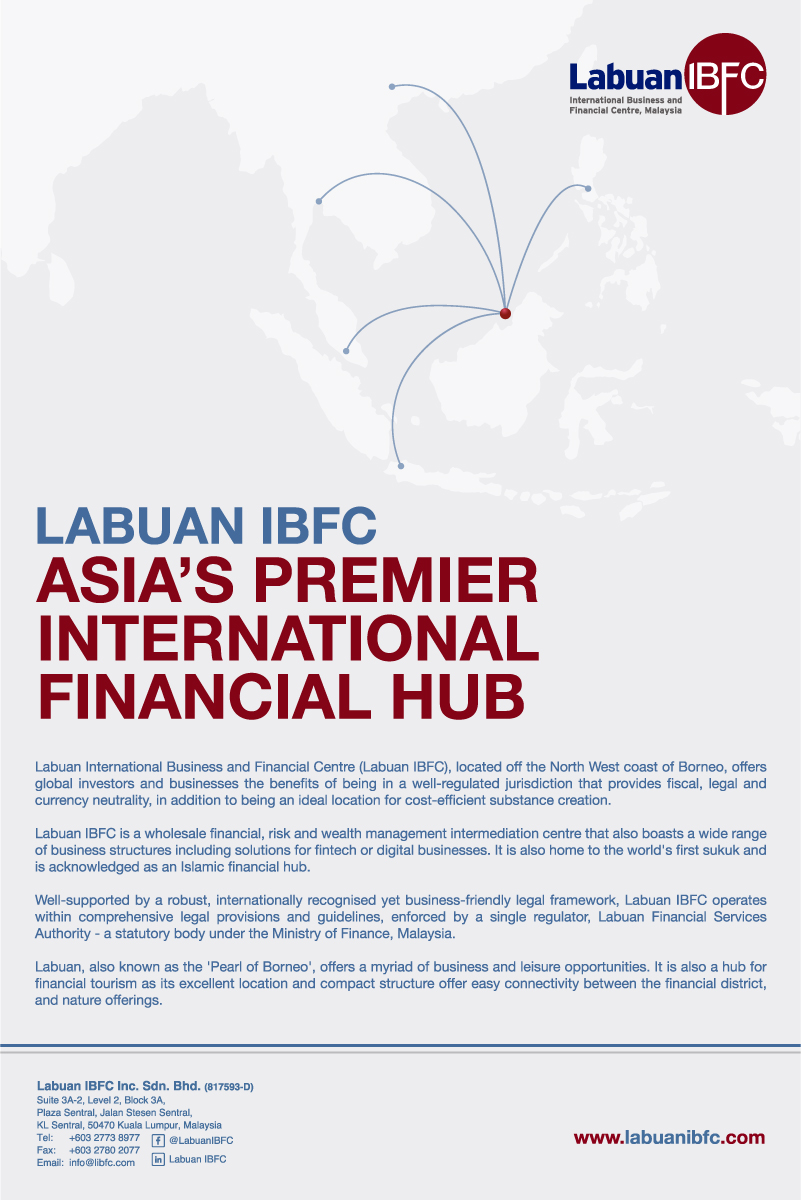As the traditional insurance market diverges further from the needs of healthcare systems, industry experts explain how a group medical stop-loss captive can provide the answer to stabilise costs and supply greater control
The climbing costs of healthcare, as well as the intricacies of legislative compliance following the Affordable Care Act in 2010, have caused more US employers to consider self-funding as an alternative option for their healthcare plans.
Medical stop-loss (MSL) coverage provides a layer of coverage above employer group self-funded healthcare insurance plans to protect against catastrophic specific or aggregated events.
MSL is included in US benefit plans under the Employee Retirement Income Security Act (ERISA). This means that the US Department of Labor has regulatory jurisdiction over the benefit plan itself, but does not regulate the insurance vehicle.
Healthcare systems and companies are increasingly looking to form MSL captives as a response to the traditional insurance market’s failure to evolve and adapt, particularly concerning exponential rate increases.
Joe Parrilli, senior vice president at Captive Resources, explains: “The lack of transparency in the traditional market makes it difficult for companies to gain any insight into their cost.”
“Companies are turning to group captives to find control and stabilisation of total medical spend.”
This difficult market dynamic has been shaped by the economy, the COVID-19 pandemic, legislative reform, and other circumstances such as ever-increasing pharmacy costs, notes Prabal Lakhanpal, vice president at Spring Consulting Group.
He explains that this has caused an increase in premiums, as well as greater claims volatility and higher reinsurance costs for self-insured employers.
In response to these tough market conditions, a well-structured MSL solution can provide greater programme control.
Lakhanpal adds: “A captive is an extremely flexible tool that creates a funding solution that protects employers from the volatility associated with the traditional market and allows for customised coverage otherwise unavailable in the commercial market.”
Spring Consulting’s Lakhanpal outlines the other key reasons why companies are increasingly looking to form a captive for MSL coverage:
- Cashflow volatility: Claims in excess of US$1 million are becoming commonplace which, for large employers who have traditionally self-insured, causes volatility from a cashflow perspective, making it harder for finance teams to budget and build expected proformas. Using a captive to support a MSL programme eliminates this cashflow volatility as claims above the self-insured retention level are funded in the captive, creating a level-funded premium plan for the employer.
- Healthcare costs: Employers are having to leverage solutions such as high deductible health plans and other forms of cost sharing to bend the healthcare cost curve. This creates an additional burden on employees and, in some cases, creates a detrimental impact on total programme costs. A stop-loss solution provides a sustainable approach to increasing costs owing to consistent transparency from a claims, costs and profit perspective, which leads to clear and balanced programme pricing.
- Control: By funding stop-loss through a captive, an employer can leverage timely data and captive savings to focus on initiatives most useful for its employee demographic, such as wellbeing initiatives, and cost control programmes focused on disease management, population health management, wellness and health advocacy.
- Transparency: Once organisations begin to use a captive funding solution for their medical spend, they usually begin to expand their horizons and seek out additional cost reduction initiatives. For example, carving our drugs and implementing a pharmacy benefit management solution, which can generate additional savings ranging from 15 to 30 per cent of drug spend.
Prescribing a group captive
The twofold trend of new formations and the expansion of existing MSL captives is a reflection of employers seeking greater control over healthcare costs, which is the main — and for healthcare, the most relevant — advantage of a group captive.
The primary function of stop-loss coverage is to cover all claims above a specified deductible level so that, when included in a group captive plan, the risk of catastrophic claims is spread over all members of the captive to decrease both volatility and cost for all participants.
Costs are reduced through a group captive owing to the eradication of carrier profit and premium taxes. For MSL captives specifically, further savings are realised through improved cash flow, as the employer holds onto the claim lag between date of service and date of payment, and exemption from state mandates.
Captive Resources’ Parrilli explains: “A captive provides the opportunity to receive dollars back in the form of a dividend when an individual company outperforms the actuarial underwriting calculation. In the traditional market, those dollars would be kept in a pool or kept as profit by a carrier.”
Control over a captive insurance programme is crucial for larger healthcare providers, argues Aon’s 2021 Captive Benchmarking Report, as hospital systems are focused on continuous improvement in general. The appeal of receiving, issuing and offering grants within captive programmes to reinvest money back into the system, therefore, is fundamental.
In addition, a group captive reduces volatility within a self-funded benefit plan by offering risk distribution and diversification, surplus accumulation, and long-term rate stabilisation. This allows for transparency in risk sharing, income and total captive performance between members.
Parrillii notes that the member-owned element of the captive structure allows like-minded group members to share new innovative approaches to control their organisation’s total medical spend. “The sharing of ideas helps members when it comes to creating a health management plan and continually improving it,” he says.
Spring Consulting’s Lakhanpal outlines that the key advantage of economies of scale applies to MSL group captives. He explains: “This leads to a level of risk stability that one organisation cannot reach on its own, as risk is spread across the group, as well as lower administrative costs and improved reinsurance terms.”
For the former, administrative costs can be reduced via direct contracts with pharmacy benefit managers and third-party administrators. For the latter, a group captive provides access to reinsurance markets for group members for both specific and aggregate stop-loss protection.
With these advantages of group captives outlined, Parrilli notes that companies are tired of the status quo. “Companies of all sizes are working to provide a true benefit for their employees but can no longer pass the premium increases down to them, so they are willing to make changes to their medical plan structure if it means the opportunity for savings,” he says.
And this is clearly demonstrated in the statistics. A recent whitepaper by Strategic Risk Solutions (SRS), ‘Captive insurance and the state of the market’, found that SRS-managed stop-loss captives saw a premium increase of $180 million between 2017 and 2021, indicating an annual growth rate of 23.8 per cent.
In addition, the number of employers participating in these programmes increased at an annual rate of 17.9 per cent.
Similarly, Aon’s benchmarking report identified that the amount of gross written premium underwritten by healthcare captives has risen by 73 per cent since 2016, marking a larger-than-average increase compared to many other industries.
Aon noted that this upward trend is likely to continue as organisations and systems increasingly recognise the value-add that captives bring to the healthcare sector, particularly in the US.
What the doctor ordered?
Despite the advantages afforded by a group captive structure, finding and implementing the right MSL coverage is not without its challenges. Parrilli highlights the importance of ensuring the appropriate employee groups are being brought into the captive, as not all risks will be provided a quote.
To address this potential concern, he recommends making use of available data “to make sure proactive, high-quality, high-performing companies are joining [and] helps the captive programme continue to outperform the traditional market.”
Spring Consulting’s Lakhanpal affirms another challenge lies in understanding the risk structure and captive terms to ensure that the captive is the right fit for an organisation and their needs. He notes that, as a risk-taking vehicle, members should understand that participation in a captive programme has an upside-downside potential of a profit or loss.
Lakhanpal adds: “Completely understanding the programme structure is an essential component from a member perspective, especially in group captive programmes where the captive structure is predetermined. We also encourage members to gain a complete understanding of the expense loads and profit distribution methodologies.”
Aegis Risk’s 2021 Medical Stop-Loss Premium Survey outlines other actions a company can take to help to overcome these potential issues, reduce stop-loss premium and ensure adequate coverage, including a review of competitive offers to leverage plan data and vendor strengths, carefully managing claims disclosure to avoid coverage gaps, and using an experienced broker or consultant.
A clean bill of health
Looking to the future of stop-loss insurance, Captive Resources’ Parrilli describes alternative approaches like group captives as “the way of the future”. He says: “As double-digit increases have become the norm, more companies that are outperforming the traditional market are going to continue to look for other outlets.”
Lakhanpal affirms this outlook, concurring that MSL funding through captives will continue to grow at a rapid pace over the next 12 months, particularly as specialty and prescription medication costs continue to rise. He adds that an area demonstrating significant potential in this space is data-driven wellness and loss prevention initiatives. Trends around wellness and lifestyle benefits programmes were exacerbated by the COVID-19 pandemic — while traditional health benefits included in MSL coverage focus on the health requirements of employees, lifestyle benefits cater to the specific needs of different demographics.
A report by MAXIS Global Benefits Network, ‘Global perspectives: COVID-19 and the future of employee benefits’, found that 46 per cent of surveyed employees said that the pandemic caused them to reassess the value of their employer’s benefits offering, while 15 per cent said they expect to see an increase in their benefits offering after the pandemic. This places captives in a prime position to capitalise on these increased demands. Lakhanpal anticipates that additional solutions, such as pharmacy benefit management programmes and other point solutions, will be incorporated into captives.
He adds: “Many group captives that start with the purpose of funding MSL coverage are looking to expand the scope of services to include other organisational risks. As group members become more comfortable with each other and get to know their business and risk profiles, groups start to look for additional ways to leverage their buying power. Looking at other risks is a natural extension.”
Lakhanpal concludes: “We continue to see innovative solutions being adopted by smaller organisations that have, until recently, been hesitant to move away from the traditional insurance structure. It is clear that employers are frustrated with rising costs, and it is innovative solutions such as these that are providing them with the solution.





